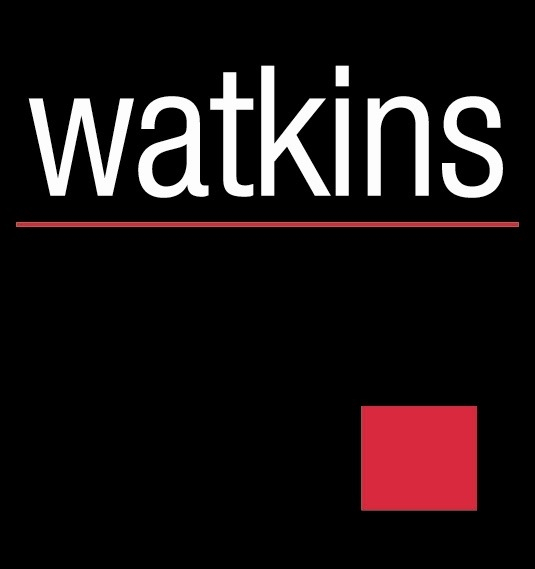Title Page
-
Document No.
-
Audit Title
-
Conducted on
-
Prepared by
-
Gas Engineers Name
-
Gas ID number
-
Gas Safe License Number
-
Qualifications Held
- CCN1
- CENWAT
- CKR
- HTR
- MET
- LPG
- COCN1
- TPCP1A
- ICPN1
- CORT1
- CDGA1
- CIGA1
Watkins Gas Operative Assessment
Literature, Policy and Procedure
-
Do you receive and read the Gas Engineer Publication sent out by Gas Safe?
-
Are you aware of Watkins Technical Bulletins regarding Gas?
-
Do you read and retain them?
-
Please give an example...
-
What Gas Reference information do you carry?
-
Are you aware and have a copy of Watkins Gas Operatives Manual which describes Watkins polices and procedures when carrying out work on Gas.
-
Tool Box talk given on Watkins Gas Operatives manual.
-
I have been issued and understand the policies and procedures as described within the Watkins Gas Operatives Manual.
-
Add signature
-
Issue Date
Equipment
-
Equipment Carried
- Manometer
- Flue Gas Analyiser
- Gas Sniffer
- Stopwatch
- Leak Detection Fluid
- Heat Mat
- Fire Extigisher
- Continuity Earth Clamps
- Smoke Matches
- Personal Co Alarm
- Gasco Meter
- Pressure Meter
-
Condition of Equipment, Comments...
Operative Assessment
-
Type of work being carried out
-
Fuel Type?
-
Property Address
-
Visual inspection of work area, installation, Comments...
-
Installation Faults
Questions
Gas Emergency Actions and Procedures
-
A gas escape is reported to a gas operative by a member of the public, the operative if unable to attend the escape immediately, should
- instruct the member of public to contact the gas emergency service
- instruct the member of public to turn off the gas at the meter control and report the escape to the gas emergency service
- arrange to quote for the repair
- contact the emergency services
-
The first priority when dealing with gas escapes is
- find the escape
- carry out a tightness test
- Safegaurd property
- Safegaurd life
-
If after turning the gas emergency control off the gas operative is still detecting a smell of gas, the action to take is..
-
If during a routine visit a gas operative discovers a gas escape of 6mb over a standard two minute test on the installation pipework, and the repair can not be made until the next day,the action required is..
-
Which of the following instructions should not be given to a member of the public, who has reported a smell of gas within their property?
- turn of the emergency/meter control
- extinguish all naked flames
- turn off all electrical switches
- ventilate the property by opening doors and windows
-
Gas Safety (installation and use) regulation 36 places the responsibility to act safely when discovering gas escapes upon
- gas emergency service operative
- all gas operatives
- all members of the public
- anyone within a,b and c
-
When an appliance is identified as At Risk the gas operative must in all cases
- warn the customer of the dangers of using the appliances
- Attach a Danger, Safety Warning, Do Not Use label
- Isolate the appliance
- All three steps contained in answers A,B and C
-
When an Appliance has been identified as immediately dangerous and the user will not allow the gas operative to disconnect the appliance, the gas operative must in all cases.
- inform the gas transporter
- inform the hse
- inform the local authority
- inform gas safe
Unsafe Situations
-
The unsafe situations procedure was updated in July 2015, were you aware of this and the how the changes impact your role?
- yes
- no
-
Please explain the changes..
-
Unsafe situation procedure tool box talk given, and TB001 handed out.
- yes
- no
-
Classify the following situations, Gas installation fails a tightness test
- ID
- AR
-
Gas installation passes a tightness test but there is a smell of gas
- ID
- AR
-
Incorrect gas pressure at the outlet of the primary meter installation which effects the safe operation of the appliance
- ID
- AR
-
Gas meter or regulator showing signs of damage from for example corrosion, mechanical damage, contact with electrical equipment
- AR
- ID
-
Pathway for gas to enter property from meter box eg damaged box or installation pipework within the meter box entering the property without a sleeve, or the sleeve is not sealed
- AR
- ID
-
No AECV where one is required , or where there is no handle fitted or restricted access.
- AR
- ID
-
No means of examining a room sealed concealed chimney/flue system in accordance with industry guidance to confirm the effectiveness of the chimney flue system.
- AR
- ID
-
Chimney or flue system is insecure or Inadequately supported
- AR
- ID
-
Pipework with an open end, connected to a gas supply
- ID
- AR
-
Flued Appliance, Evidence of Spillage or leakage of products of combustion
- ID
- AR
-
Flued Appliance, Flue termination located in a position which could allow products of combustion to enter properties where an alarm has been activated or ill health symptoms experienced,
- ID
- AR
-
Pressure regulator not installed at primary meter, or the regulator is not suitable for the supply.
- ID
- AR
-
Pipework and or fittings of inappropriate material for purpose and liable to damage eg plastic water pipe or hose.
- ID
- AR
-
Undersized pipework proved to be affecting the safe operation of any appliance.
-
Pipework suitable for gas used in an inappropriate location or situation
- AR
- ID
-
Installation pipework located within an unventilated duct or void
- AR
- ID
-
Any mechanical ventilation system for the purpose of providing combustion ventilation not interlocked to the appliance.
- AR
- ID
Chimney Testing
-
A flue flow test must be carried out using a smoking pellet and the appliance
- Turned off
- Turned on low rate
- Turned on full rate
-
A spillage test must be carried out using a smoke match or taper with the appliance.
- Turned off
- Turned on low rate
- Turned on full rate
- it may be either on or off
-
When carrying out a spillage test the doors, windows and any fans in the appliance room must be...
-
When a spillage test is carried out on an open flued boiler, the smoke match holder must be placed near the
- Burner
- Draught Divertor
- combustion air inlet
- convection air inlet
-
If during the flue flow test the gas operative observes smoke exiting the flue into an upstairs room, the action to be taken must be..
- Treat as immediately dangerous
- Treat as At Risk
- Inform Gas Safe
- Inform the customer
Installation of Pipework and a Fittings
-
Before installing any Gas pipework what should you ensure...
- A drawing showing Gas Pipework Size and Route
- Appropriate material
- Safety Precautions
- All of the Above
-
Once you have completed any work on a gas pipework what should you carry out?
-
Answer....
-
What fitting must be used whenever gas pipework or fittings are disconnected?
-
Answer...
-
When installing Trac Pipe it is Watkins policy to always install the pipe within an additional sleeve throughout any unventilated void. How would you terminate and finish the additional sleeve?
-
Answer...
-
Can you install an compression fitting in an inaccessible location?
- Yes
- No
-
Can you install Gas pipework with a solid concrete floor?
- Yes
- No
-
Pipework installed within a screeded floor must have a minimum cover of
- 35mm
- 30mm
- 25mm
- 20mm
-
Pipework installed behind a dot and dab wall must be enclosed with
-
Answer...
-
At what depth should a Gas Pipework be laid below open ground?
- 400mm
- 375mm
- 350mm
- 325mm
-
When installing a Gas pipe within a protected area within a block of flats you should ensure that it is
- it is enclosed with a duct
- adequately vented at high and low level
- the duct is fire rated to the same level of the protected area
- Or if the pipework left exposed it should be made of screwed steel, continuous length of copper, or CSST
-
When installing a pipework within a duct, no purpose made ventilation is required when the cross sectional area of the duct is...
- not exceeding 0.01
- 0.01 and not exceeding 0.05
- 0.05 and not exceeding 7.5
- exceeding 7.5
Commissioning
-
You arrive at a new property to commission the gas system and the gas meter is capped. What should you do?
-
The Gas meter is capped, please describe how you would re connect the meter?
-
Answer...
-
Describe a tightness test inc let by
-
Answer...
-
Describe a purging procedure...
-
Answer...
-
Can we purge a domestic gas installation that exceeds 0.035 of pipework and fittings volume?
- Yes
- No
-
Once you have Fired the Boiler what minimum safety checks should you carry out to commission the boiler?
-
Answer...
-
Please explain FGA procedure...
-
Answer...
-
Finally please explain what documentation you would have to complete and handover to the customer and Watkins
-
Answer...







